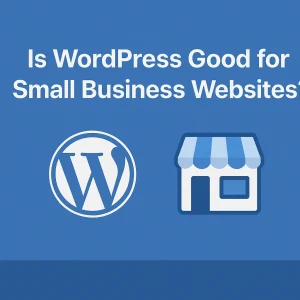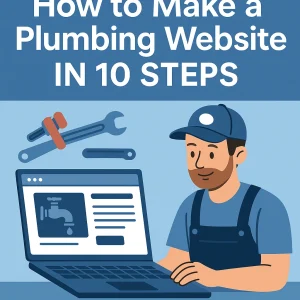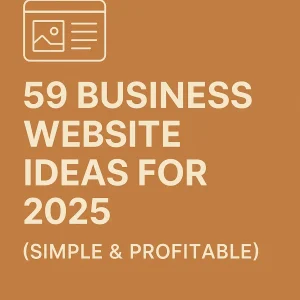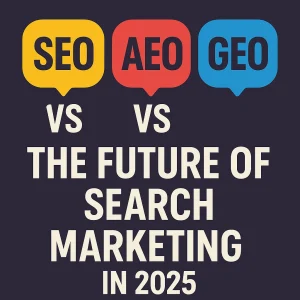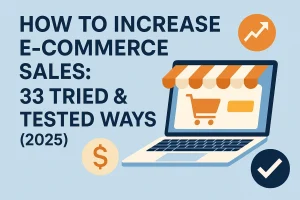 Selling online has never been so exciting or so competitive. Millions of stores are clamouring for attention, so standing out is less about having awesome products and more about building trust and providing for an experience that converts casual visitors into loyal buyers. After a strong retail brand has been considered developed, how do you convert that loyalty into measurable results? That's the million-dollar question that weighs heavily on the mind of every owner of a store: how actually do you get people to buy, and keep buying?
Selling online has never been so exciting or so competitive. Millions of stores are clamouring for attention, so standing out is less about having awesome products and more about building trust and providing for an experience that converts casual visitors into loyal buyers. After a strong retail brand has been considered developed, how do you convert that loyalty into measurable results? That's the million-dollar question that weighs heavily on the mind of every owner of a store: how actually do you get people to buy, and keep buying?
The truth is opening an online store is just a beginning. Anyone can open a shop, but the hard part is selling and keeping customers on their toes about the rival brands in a fast-changing digital market. Maybe e-commerce sales for you have dwindled, or let’s say that you are a newbie in the industry trying to sort out the best strategies to really help come 2025. Whichever way you put it, relax, you are exactly where you should be.
This is a complete walk at 33-proven strategies to boost your e-commerce sales for 2025. These are not just theories; they are tested and tried methods with data and success stories backing them. From knowing SEO for retail websites in Canada and building customer loyalty to optimizing checkouts and making clever infrastructure decisions like WooCommerce hosting Canada for your online retail store or PIPEDA-compliant hosting for your retail stores, you will see integrated moves that are instantly going to benefit your pocket. By the end of this guide, you won't just have some tips but a well-laid-out plan that is actionable for boosting your online store performance, increasing conversion, and ensuring sustained growth in one of the most competitive e-commerce landscapes ever.
What You Need to Know about the E-Commerce Sales Funnel on-the-go
Before you start thinking about strategies, you must understand that there is an e-commerce sales funnel. In essence, this is your customer's journey:
- Awareness : Customers coming to know your brand.
- Consideration: They compare products, read reviews, and look around.
- Purchase: Conversion made by buying.
- Retention: Customers returned for further shopping.
- Advocacy: Loyal customers will do the word spreading.
Your target? Optimize every step so that visitors can easily and smoothly meander through awareness to advocacy.
5 Metrics to be Used to Track Your E-Trade Sales Effectively
For the e-commerce businesses intending to expand, data, not gut feeling, should always be relied upon. Numbers speak out the real story-the extent to which customers spend and return to your shop. Yet the list of all available analytics is so long that your head might just go round.
Just measure what is important: Out of all these measurements, the five below serve as the foundational pillars of keeping track, understanding, and eventually growing online revenue. They give the state of the business today and what to concentrate on for the highest possible growth tomorrow.
Average Order Value (AOV) :
- The average order conveys: It is the average amount of money consumed by a consumer for each order.
- Why is it important: High AOV means that you are gaining revenue without attracting more customers to hit new traffic - making it one of the easiest ways to grow profitably.
If you view it this way, by increasing the $50 AOV to $65, customers made the revenue grow by 30% without one single new customer.
Ways to Improve AOV:
- Last-minute cart nudges like "Spend $10 more for free shipping."
- One-click-upsell opportunities right after the purchase lock (like Amazon's "Customers also bought..." suggestions).
- Close to pricing single items to provide bundles with added value.
- A tiered discount to incentivize bulk purchases (e.g., Buy 2, Get 10% Off).
- Unlock the VIP-product when the cart reaches a certain number.
Customer Acquisition Cost (CAC):
- What it is: The overhead for bringing in a new customer, such as advertising, marketing, and promotion costs.
- Why it matters: Not only may you further add costs to those already incurred by acquiring customers through high CAC, but you can also end up eating into profits when sales increase. The lower the CAC, the lower inefficiencies and unsustainable costs in marketing.
You spend $40 acquiring a customer worth $30: You are losing money unless that customer is brought back.
Ways Of Reducing CAC:
Optimize email & content marketing for organic clients.
- Incentivizing user-generated content (UGC) because people want to trust fellow customers.
- Start a referral program for loyal customers to bring in new customers.
- Keeping new customers engaged post-purchase is going to help with their return, thus lowering CAC in the long term.
- Just to clarify, the focus is not on cold targeting with paid ads-the intent ion is to build warm audiences instead.
Customer Lifetime Value (CLV):
- The lifetime value of a customer is the total income a customer will ever generate over the entire period of their relationship with your brand.
- Why it matters: CLV generally showcases the sustainability of the company in the long run. For example, increased customer frequency makes a high value CLV because it incurs lower costs than new acquisitions. For example, one customer who shops for $100 with one purchase can actually be more profitable than a repeat customer who spends $50 five times.
Strategies bolster CLV:
- Trusted with transparency in product sourcing info and comparisons.
- Initiate VIP membership programs featuring exclusive savings and benefits.
- Launch exclusive member-only capsule collections.
- Curated shopping lists according to customer tastes.
- Display member vs. regular pricing to highlight loyalty benefits.
Shopping Cart Abandonment Rate (CAR)
- The percentage of customers that add items to their cart but do not eventually check them out is what cart abandonment is all about.
- It is bad, which means less revenue. Reducing it is, according to a lot of people, the quickest way to add to your sales without shelling out for any extra marketing.
Did you know? The average cart abandonment rate across the globe is about 70%. And just think how many sales would be recaptured if only a fraction of the numbers were recaptured. Strategies that can reduce cart abandonment would be:
Take exit-intent contacts and set them with custom discounts, based on which point they are in the checkout process.
- Bring free shipping thresholds early in the shopping journey.
- Enable express checkout options (like Apple Pay or PayPal) right on product pages.
- Communicate upfront with delivery times, thereby setting clear expectations.
- Send personal cart recovery emails with discounts or reminders.
Returning Customer Rate (RCR)
- Definition: Percentage of buyers that returned and made purchases again.
- Significance: Returning customers are much more profitable than new ones. They tend to trust your brand more, are easier to sell to, and are quite often encouraged to spend more with each purchase. Research further shows that it costs about five times more to acquire a new customer than to keep one. This makes the success of RCR an absolute must for the future of any business.
Ways to Boost RCR:
- Provide seamless multi-channel customer support (email, chat, social).
- Create loyalty-driven offers tailored to past purchase behavior.
- Engage with the community via social challenges or giveaways.
- Provide loyal consumers discounts on a loyal basis, e.g., app-only coupons.
- Use reorder nudges & refill reminders with perfectly-timed follow-ups.
33 Tried & Tested Ways to Increase E-commerce Sales (2025)
Section 1: Website & Hosting Optimization
It can be said that the foundation of an online store is digital. It doesn't matter if your marketing is great, if your site is slow, unsecure, and crashing repeatedly, you will lose sales before they check out. This is exactly why hosting and website optimization are first critical steps.
Best Web Hosting in Canada for Retail Businesses
- Your hosting engine is the powerhouse of the store and all the rest-the best secure, fastest, and most reliable hosting plan would help guarantee your store will be running well while establishing trust with your customers. Shoppers won't wait for slow page download and certainly won't purchase from a site that looks risky.
- Check for PIPEDA Compliance when identifying Best Web Hosting np in Canada in retail business: Because most Canadian e-commerce concerns involve sensitive personal and payment data, compliance with the Personal Information Protection and Electronic Documents Act (PIPEDA) is a must for legal protection and trust in consumers.
Pro Tip: Investigate 24/7 support, SSL certificates, DDoS protection, and automatic backup. They'll save you from unexpected downtime.
Use VPS Hosting for Retail Ecommerce Websites
- Shared hosting might be cheaper, but it will become a liability very quickly if your business experiences growth. The site becomes so slow in the face of heavy traffic loads from other sites when sites share the same server resources (just imagine Black Friday or Boxing Day).
- This is where best VPS hosting in Canada for eCommerce sites in. A Virtual Private Server provides dedicated resources such as CPU, RAM, and bandwidth, meaning that your site would remain stable, fast, and secure in case of traffic spikes. This basis allows your customers to shop easily without experiencing slowdowns or checkout errors.
Pro Tip: VPS hosting also enables you to customize your environment better than shared hosting and gives you greater scalability over it. Hence, the environment can be modified to suit your growing store.
WooCommerce Hosting Canada for Online Store
WooCommerce is, of course, the most-loved e-commerce plugin if you are using WordPress. Not all hosting is made equal. Standard WordPress hosting may not be optimized for retail, which might have an impact on performance.
That’s where best WordPress hosting in Canada for WooCommerce really makes a difference. E-commerce sites are kept in mind and given features like:
- Faster product page loading
- Optimized checkout experiences
- Built-in caching and database optimization
- Better security layers to protect transactions
Pro Tip: Choose a host that has staging environments. This allows you to test new themes, plugins, or sales campaigns before going live.
Page Load Speeds Should be Supercharged
One second in slow page loading means a conversion decrease by 7%! Online shoppers are very impatient; from 2025, it is all about speed.
Adopt a supersonically fast site for the customers' and search engines' happiness:
- Consider compressing your images while maintaining their quality.
- Content Delivery Network should be utilized to serve content faster to different regions.
- Use heavy scripts or useless plugins to a minimum.
- Opt for high-performance hosting which gives priority to speed.
Pro Tip: Use tools such as Google Page Speed Insights and GTmetrix to test site speed often and try to optimize consistently.
Mobile Optimization is a Must
Mobile shopping is no longer the future, it is the present. Today, over 70% of e-commerce traffic comes from mobile devices, and mobile sales increasingly are moving ahead of the desktop. If your website is not mobile-friendly, you are simply letting money slip through your hands.
A mobile-optimized site should go for:
- Responsive design to adjust to any screen size.
- Smooth autofill options payment and shipping checkout process.
- Thumb-appropriate sizeable buttons and easy navigation.
- Speedy loading even on slow mobile networks.
Pro Tip: Adopt mobile wallets like Apple Pay and Google Pay for quicker checkouts—customers love the convenience.
Want more people to discover your store? If they find their way to you, visibility is everything in e-commerce. SEO is what puts your store above competition when customers search for products you sell.
- SEO for Retail Websites Canada : Of course, focus on local Canada-only searches but also touch on the big countrywide visibility part. Optimize all your meta titles, descriptions, and H1 tags with retail-specific keywords such as "best online clothing store in Canada" or "PIPEDA-compliant e-commerce hosting." Also include product schema, review schema, and FAQ schema because these will help your listings stand out in Google results. With the right eCommerce SEO services in Canada, you can streamline this entire optimization process more effectively.
- Searching for Product Page Optimization : Each product page should be a mini-landing page. Use keyword-rich titles and offer long-form product descriptions, highlighting benefits and features in bullet points. Add alt tags to product images and URL optimization (for example, yourstore.ca/running-shoes-men). Then use internal linking to guide shoppers to related products.
- Write Blog Contents for E-commerce SEO : Take the content that's your 24-hours sales person. Start a blog with buy guide (“How to Choose the Best Winter Jackets in Canada”), product comparisons, shopping trends by seasons. This does not only attract crowds but has also converted to building buyer confidence. Pro tip: optimize blog posts for product links and CTAs to convert readers into buyers.
- Use Video SEO : Shoppers love visuals. Upload product demo videos, unboxing videos, and review movie pieces to Youtube and embed them in product pages. Use keyword-rich video titles and descriptions and don't forget transcripts for SEO. Videos keep visitors longer on site which boosts rankings and conversion.
- Capture Voice Search Queries : With the emergence of Alexa, Siri, and Google Assistant, optimize with natural conversational search phrases. For example: "Where can I buy waterproof hiking boots in Canada?" Add FAQ sections in a Q&A fashion to curtail this pool of traffic.
Section 2: Conversion Rate Optimization (CRO)
The act of bringing in traffic is stage one; turning visitors into paying customers is where most of the profits accrue. Here are the tricks any shop could learn:
- Simplifying Checkout Process : An additional click costs a sale. Minimize checkout procedures as much as possible and allow guest checkout. Retain the details for returning customers and put in place buyer progress bars indicating how far they are in completing a purchase.
- Use Trust Badges & PIPEDA Compliance Notices : Shoppers expect proof that their data is secure. SSL certificates, PCI compliance logos, and PIPEDA compliance statements are best displayed on their respective checkout pages as these signals reduce cart abandonment and instil confidence.
- Introduce a series of payment options : Access equals conversions. Adding PayPal, Apple Pay, and Google Pay will likely drive up your revenues, while you can add the newest BNPL services such as Klarna and possibly even cryptocurrency for some of your early adopters. Meet the customers wherever they play; this is what is bringing in sales.
- Use Exit-Intent Popups with Discounts : Do not allow hesitant shoppers to leave without a purchase. Sending exit intent popups with discount codes, free shipping, or a time-limited offer will do wonders. You will be amazed at how even a slight incentive may convert an abandoning visitor into a loyal customer.
- Social Proof Added : No other marketing method is as effective as that of real customer validation. Include ratings, product reviews, testimonials, and user-generated content (like pictures of customers using your products). Highlight tags such as "Best Seller" or "Most Loved".
Section 4: Marketing & Customer Engagement
- Personalize Email : Generic bulk emails have no impact anymore. Customers now expect messages tailored to their preferences and shopping-related behavior. Use segmentation to categorize shoppers by purchase history, browsing style, or location. For example, send winter-gadgets discounts to customers in colder provinces, or back-to-school essentials to parents. Personalization creates a kind of feel-good factor for the customer, and he/she opens up the email because it is more relevant to him/her and not because it looks like just another spam.
- Use SMS Marketing : SMS marketing is the most underrated yet the best-performing channel in the entire e-commerce realm; with more than 90% open rates, its handy features allow the execution of time-sensitive campaigns for flash sales, cart abandonment, and shipping updates. Ensure that the messages are concise, engaging, and actionable. One of the best examples is, "Your favourite sneakers are back in stock—grab them now before they sell out!" please work unaware that SMS can also work effectively when executed together with email campaigns in a multi-channel engagement strategy.
- Conduct Referral Market Programs : The mouth is still the best marketing. Referral programs turn happy customers into brand ambassadors. When existing customers refer new shoppers, they are offered rewards such as discounts, free product, and loyalty points. Programs such as "give $10, get $10" very effectively bring in new business. New customers are cheaper to acquire, with referred customers generally being more loyal and spending more than regular pot customers.
- Loyalty Programs : A customer who continually returns is the one that keeps the real estate store alive. The better the loyalty program, the more likely that the customer will come back again and again. Points for each purchase, birthday gift, early access to sales- giving that gamified experience with tiers allows the customer to want to spend even more in hopes of earning more solid rewards. Research shows that customers with loyalty programs have a much higher customer lifetime value(CLV).
- Social Media Commerce : It is actually more than just engagement-Social media is now a major sales channel. Instagram Shop, TikTok Shop, and Facebook Shops are examples of retail channels where users can browse and buy through the same application. Shoppable posts, product tagging, and live shopping streams are excellent ways to convert followers into buyers. The last piece in the puzzle is to add influencer partnerships, UGC, and targeted ads to create a seamless shopping journey from discovery to purchase.
Section 5: Upselling & Retention
- Cross-Sell and Upsell at Checkout : The checkout area is not a mere payment site; it is the hottest piece of real estate for any kind of business trying to increase sales. For example, cross-sells can recommend complementary products-"Add socks to your sneakers" or "Protective Sleeve to suit your laptop." Upsell by presenting more expensive alternatives ("Why not upgrade to Pro for just $20 more?"). Executed properly, this soft prompt could greatly increase an average order value without feeling overly pressure.
- Make Provision for Subscription Models : The subscription model is a game changer for stores that offer consumables-such as coffee, vitamins, pet food, and skincare. It promises predictable recurring revenue and multiplied convenience for customers (running out of important essentials will no longer be an issue). Plus, provide Free Shipping on subscription orders, discounts for subscribers, or early access to new products for more icing on the cake. Entire empires were built on the Dollar Shave Club model, which shows how subscriptions nourish long-term relationships with customers.
- Use Gamification in Shopping : Shopping is supposed to be fun, and gamification brings in this aspect of exciting fun that captivates the customer's mind to pull him back into the system. These can be spin-the-wheel pop-ups for discounts, level-based loyalty (e.g. Bronze, Silver, Gold), or achievement badges for reaching milestones ("You've placed 5 orders—unlock a reward!"). Psychologically, gamification plays on rewards and progress and creates a habit loop, giving birth to repeat purchases.
- Seasonal Campaign Promotion : Seasonal and holiday campaigns bring urgency into the picture for shopping while making it festive, like those limited-time promotions for Christmas, Black Friday, Valentine's Day, or even back-to-school shopping. Not only does this help in the sales boost but also helps clear out older stock. Complete the whole activity with themed bundles, promotion pages, and countdown timers. They have more tendency to buy when they think they are getting a special deal for a limited time.
- Community Engagement Campaigns : Loyalty of a different kind is, however, built around the community, so set some community challenges such as health-related fitness challenges online, hashtag campaigns for user content, or contests for customers to share their experiences with your products. Community-driven marketing fosters an emotional connection whereby customers feel a part of something larger. Loyal communities often turn into the best ambassadors for you and help in widespread marketing through word of-mouth.
Analytics and Experimentation
- Test Everything by A/B Comparison : A tested or an assumed? Better test is the guiding principle. Thus, with A/B testing, it asks you to compare two versions of the same element, be it headlines, buttons, or product image or checkout flows, for determining the better working variant. The most dramatic improvement to conversion might even come from changing the color of the button. Walking the customer journey with continuous tests and optimization would then eliminate guesswork; rather, a focus on data can better the customer journey.
- Heatmap : Numbers impart what happened, while heatmaps help explain why it happened. A heatmap tool can register exactly where a customer clicks, scrolls, or abandons the site. Insights would provide, like "Users never see the CTA because it is below the fold." or "The promo banner grabs more attention than the product list work.". Now, taking advantage of this knowledge, you could optimize layout, fix UX troubles, and therefore minimize abandonment from there.
Track Key Metrics Regularly : Tracking data without proper assessment is blindfold travelling. Key performance indicators should be closely monitored at least once weekly; this guarantees their "carried growth":
- AOV (Average Order Value): The amount customers spend per purchase.
- CAC (Customer Acquisition Cost): How much it costs to obtain a customer.
- CLV (Customer Lifetime Value): The total revenue that can be expected out of a single customer.
- CAR (Cart Abandonment Rate): Percentage of users abandoning their carts without making a purchase.
- RCR (Repeat Customer Rate): Frequency of customer repurchases.
Therefore, if constant tracking is done, trends can be detected early, leaks can be fixed, and better decisions can be subsequently made.
Predictive Analytics. : Hand in hand with artificial intelligence and machine learning, a company turns from, almost all aspects of, a reactive position into a proactive one. Such tools, that engage in predictive analytics, study premeditated behavior in order to predict demand, anticipate churn, or recommend personalized products.
So for example, when a customer buys monthly skincare products, AI will notify or discount then automatically encourages ordering. Basically, data-driven personalization increases retention and maximizes revenues.
Customer Feedback Loops : Numbers tell a story; customer voices fill the gaps. Collect reviews, perform post purchase surveys and research customer support ticket analyzes for likely areas where frictions arise. Repeated complaints over confusing checkout steps show where efforts must be made to improve. Feedback loops close the gap between what one thinks customers want and what they actually need. This creates customer loyalty while significantly reducing lost sales.
Section 7: Future-Proof Your Store (2025 and Beyond)
- Realtor AI Chatbots Must, Now Be Incorporated into Investments : By 2025, the clients have to be expecting instant support. AI chatbots can provide real-time assistance any hour in the day or night- doing all such from answering FAQs to guiding customers through purchases, and also recommending products based on the browsing history of customers. The last barrier of earlier bots has gone; these latest conversational AIs learn and adapt with every interaction; it has evolved to an extent that the customers feel like they are talking to a person as opposed to a bot. In this way, cart abandonment decreases, and customer satisfaction can only be increased.
- Products should be sustainable and be ethical. : Millennials and Gen Z do not earn income just to spend it on whatever but instead spend it for the rights that they believe in. They then look for brands and products to support, whether the packaging is eco-safe, the materials used are ethically sourced, or the products shipped are considered carbon neutral. Drawing attention toward sustainability in its practices and providing green alternatives instantly attracts a loyal base of customers that believe in responsible consumption. It has become a trend, but sustainability has also become a competitive edge.
- Omnichannel Retail : That gap between the online shopping experience and offline shopping is fast being filled. Today's customer wants to have seamless shopping from Instagram browsing to buying one item on the site and picking it up in-store. Omnichannel thus integrates social commerce with physical into one journey following e-commerce. It allows more touchpoints with brands which keep customers engaged while giving them the freedom to buy anytime and anywhere.
Final Thoughts
Not an increase in e-commerce sales in 2025, One magic hack or quick fix will do that. In fact, it will be through an entire system of continual improvement across every area in one's online store. Everything would have a part in increasing conversion rates and creating brand in loyalty-from the best web hosting in Canada for eCommerce to fin e-tuning SEO for discoverability to make checkout solid flows and retention strategies.
You are, however, right that just adopting these 33 tried and tested strategies will see measurable growth in revenue and also build a store for the long haul: Customers do not only remember what they bought; they remember how they felt when served. Make that memory count and take away your clients from the competition.
Are you ready to boost your online retail store now? Well, start with the right foundation—invest in PIPEDA-compliant hosting for retail stores with 4GoodHosting to give those customers their expected secure, fast, and seamless shopping experience with a VPS hosting for retail eCommerce websites.





